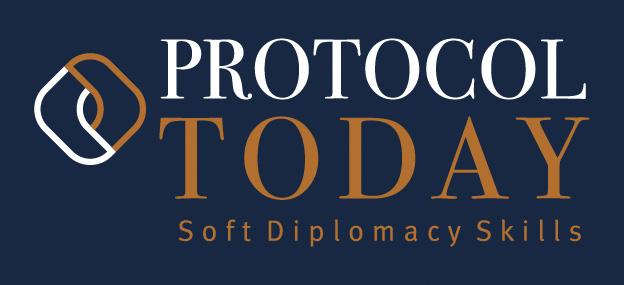
Intercultural communication in professional settings refers to exchanging information and ideas between individuals from different cultural backgrounds within a work environment. It is crucial in fostering understanding, collaboration, and effective decision-making among diverse teams. Intercultural communication enhances productivity, innovation, and global business success by bridging cultural gaps.
Understanding Culture
Intercultural communication skills are crucial in multinational companies, as understanding cultural dimensions like individualism vs collectivism and high vs low power distance helps team members navigate potential misunderstandings and adapt their communication styles. This can lead to better collaboration, increased efficiency, and improved business outcomes. In addition, intercultural communication skills also play a crucial role in customer relations. By understanding diverse customer base’s cultural nuances and preferences, companies can effectively tailor their communication strategies to engage and connect with their target audience.
Stereotypes and biases in intercultural communication can cause misunderstandings and hinder collaboration, potentially offending those who value indirect communication. This can result in strained relationships and missed business opportunities. Thus, companies must educate employees about cultural norms and encourage open-mindedness to ensure successful intercultural communication. However, even with education and open-mindedness, misunderstandings can still occur. For instance, in a diverse team where individuals from different cultures have varying communication styles, there may be a tendency to overcompensate and avoid any potential offence by being overly indirect in communication. This can lead to confusion inefficiency, and ultimately hinder effective collaboration within the team. To tackle the challenge of cross-cultural communication, team members should actively participate in training and understand each other’s communication preferences. This fosters an environment where open expression of thoughts and concerns promotes a balance between directness and indirectness.
Barriers to Intercultural Communication
Language barriers hinder effective intercultural communication as individuals struggle to understand each other due to differences in language proficiency. To overcome this challenge, team members can use strategies such as using simple and clear language, utilising visual aids or gestures, and employing translation tools or interpreters when necessary. Additionally, promoting language learning and providing language training opportunities within the team can help bridge the gap and enhance communication among team members from different cultural backgrounds. For example, in a multinational company, a group of employees from other countries may have varying levels of English proficiency. Team members can engage in regular language training sessions to ensure effective communication to improve their language skills. They can also use visual aids like charts or diagrams to convey complex ideas and concepts.
Nonverbal communication differences and their implications can also be addressed by providing cultural sensitivity training, which can help team members understand and interpret nonverbal cues from different cultures. Technology like video conferencing or instant messaging can enhance team collaboration by bridging nonverbal communication gaps, preventing misunderstandings and promoting better understanding. However, it is important to note that cultural sensitivity training may not always be effective in addressing nonverbal communication challenges. For instance, specific nonverbal cues may have completely different meanings or associations in some cultures, making it difficult for team members to interpret them even with training accurately. Additionally, relying solely on technology for nonverbal communication can be problematic, as technical issues and limitations can hinder the transmission of facial expressions and body language, leading to potential misunderstandings.
Misinterpretation of gestures, body language, and facial expressions can lead to miscommunication and conflicts within a team. Team members must be aware of these cultural differences and technology limitations to communicate effectively and avoid misunderstandings. For example, during a video conference call with international colleagues, one team member may use a hand gesture considered offensive in their culture. Without seeing this nonverbal cue, the other team members may misinterpret the intention and become offended, leading to tension and conflict. Technical issues during calls can lead to miscommunication and misunderstandings among team members, hindering effective collaboration and decision-making. To maintain a harmonious and productive team environment, team members must be aware of potential challenges and find alternative communication methods to accurately interpret facial expressions and body language cues.
Developing Intercultural Communication Skills
Active listening and empathy in intercultural contexts are crucial for understanding and respecting different cultural norms and values. By actively listening and showing empathy, individuals can bridge the gap between different communication styles and avoid misunderstandings. This can foster a more inclusive and collaborative team environment, promoting effective intercultural communication. While active listening and empathy are essential in intercultural contexts, relying solely on these skills may not be enough to fully understand and interpret nonverbal cues, especially when technical issues hinder communication.
Cultural sensitivity and awareness are also crucial in navigating intercultural communication. Understanding and respecting cultural norms, values, and beliefs can help individuals avoid unintentionally offending or misunderstanding others. Additionally, seeking feedback and clarification from individuals from different cultural backgrounds can provide valuable insights and help bridge any gaps in understanding. However, as this works, initially, they are crucial in bridging the communication gap. Still, they may not always be enough to overcome deeply ingrained cultural biases and prejudices that can lead to misunderstandings. Additionally, even with the best intentions, individuals from different cultures may have different expectations and interpretations of nonverbal cues, making effective communication challenging despite efforts to bridge the gap.
Adaptability and flexibility in communication styles are crucial to overcoming these challenges. It is essential to be open-minded and willing to adjust one’s communication approach to understand better and connect with individuals from different cultures. Additionally, seeking cultural awareness and education can also greatly enhance cross-cultural communication skills, as it allows for a deeper understanding of the values, norms, and customs of others. For example, a multinational corporation wanting to expand its business in Japan may face difficulties due to cultural differences in communication styles. To bridge this gap, the company could hire a language and cultural consultant who can provide training on Japanese business etiquette, communication norms, and cultural values. This would enable the employees to adapt their communication styles when interacting with Japanese clients or colleagues, ultimately fostering better cross-cultural understanding and collaboration.
Overcoming Cultural Misunderstandings
Cultural intelligence and humility can help bridge communication gaps and create a more inclusive work environment by recognising biases and assumptions. However, these skills may not necessarily lead to smoother intercultural interactions, as communication gaps still exist even with increased awareness. Addressing structural and systemic issues is also necessary for fostering a more inclusive and collaborative work environment. To sum up, cultural intelligence and humility are not enough to bridge communication gaps, as structural and systemic barriers must be addressed. Organisations should implement diversity and inclusion training programs, establish inclusive policies and practices, and promote equal opportunities for career advancement. Moreover, open dialogue and active listening can help identify and address unconscious biases or discriminatory practices within the organisation. These steps allow organisations to create a more equitable and inclusive workplace for all employees.
ADVERTISE YOUR COMPANY INTERNATIONALLY IN OUR MAGAZINE GLOBAL MINDSET
ProtocolToday Magazine
Share this article

Written by Eric Muhia, an International Studies and Diplomacy Graduate Student and Young Diplomat
06 October 2023, Kenya
Category: Cultural Intelligence
Reference: EM061023CI




